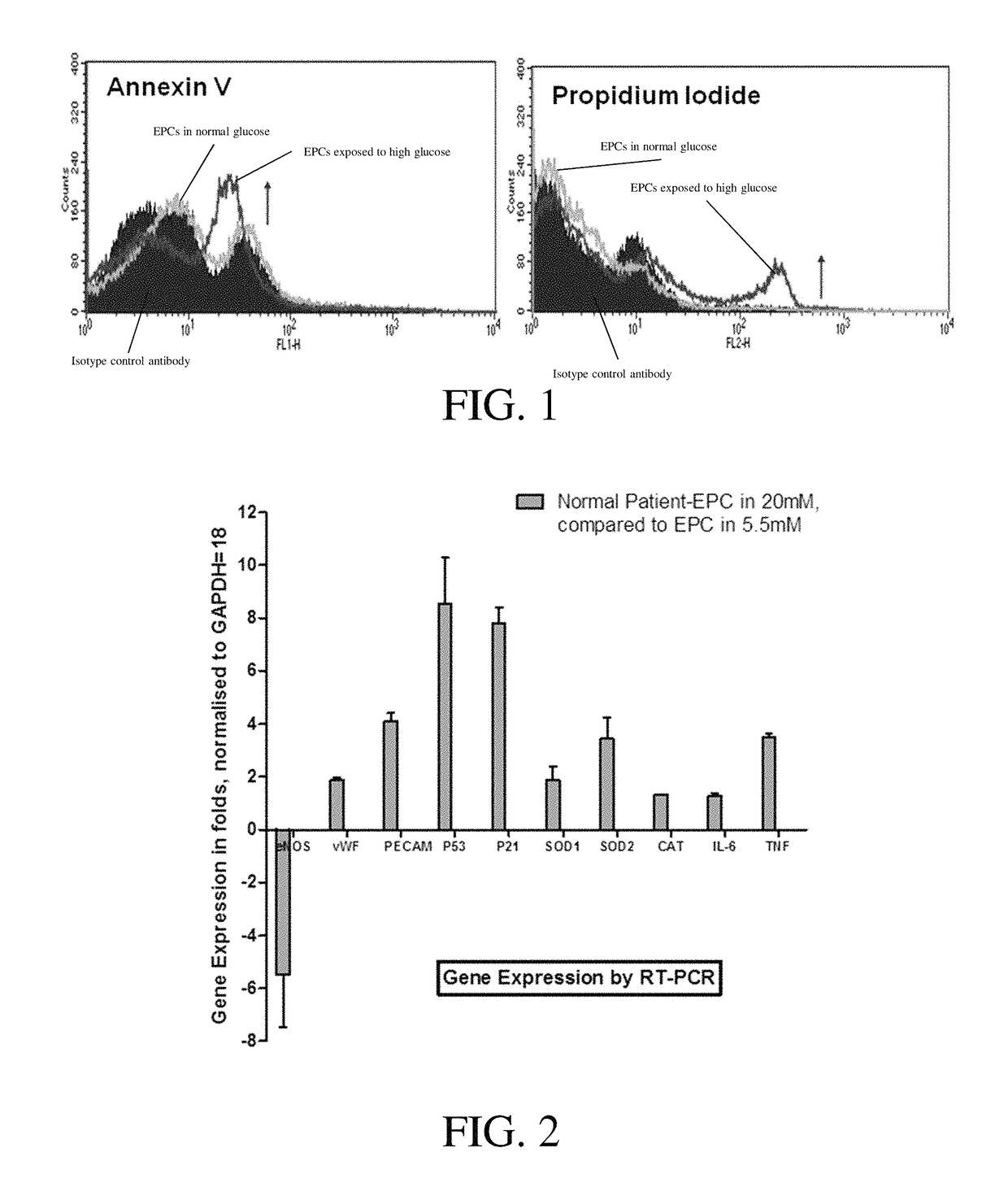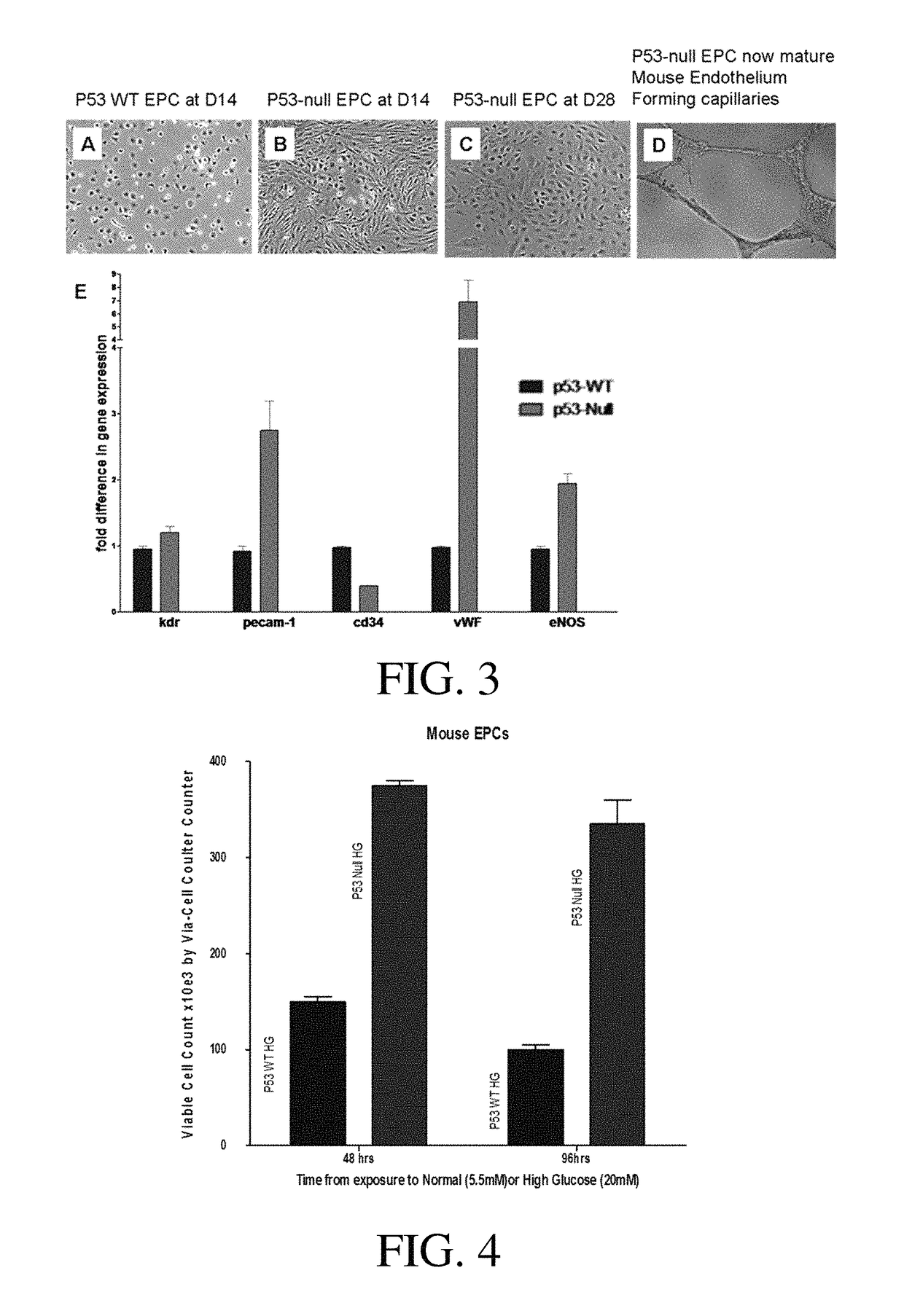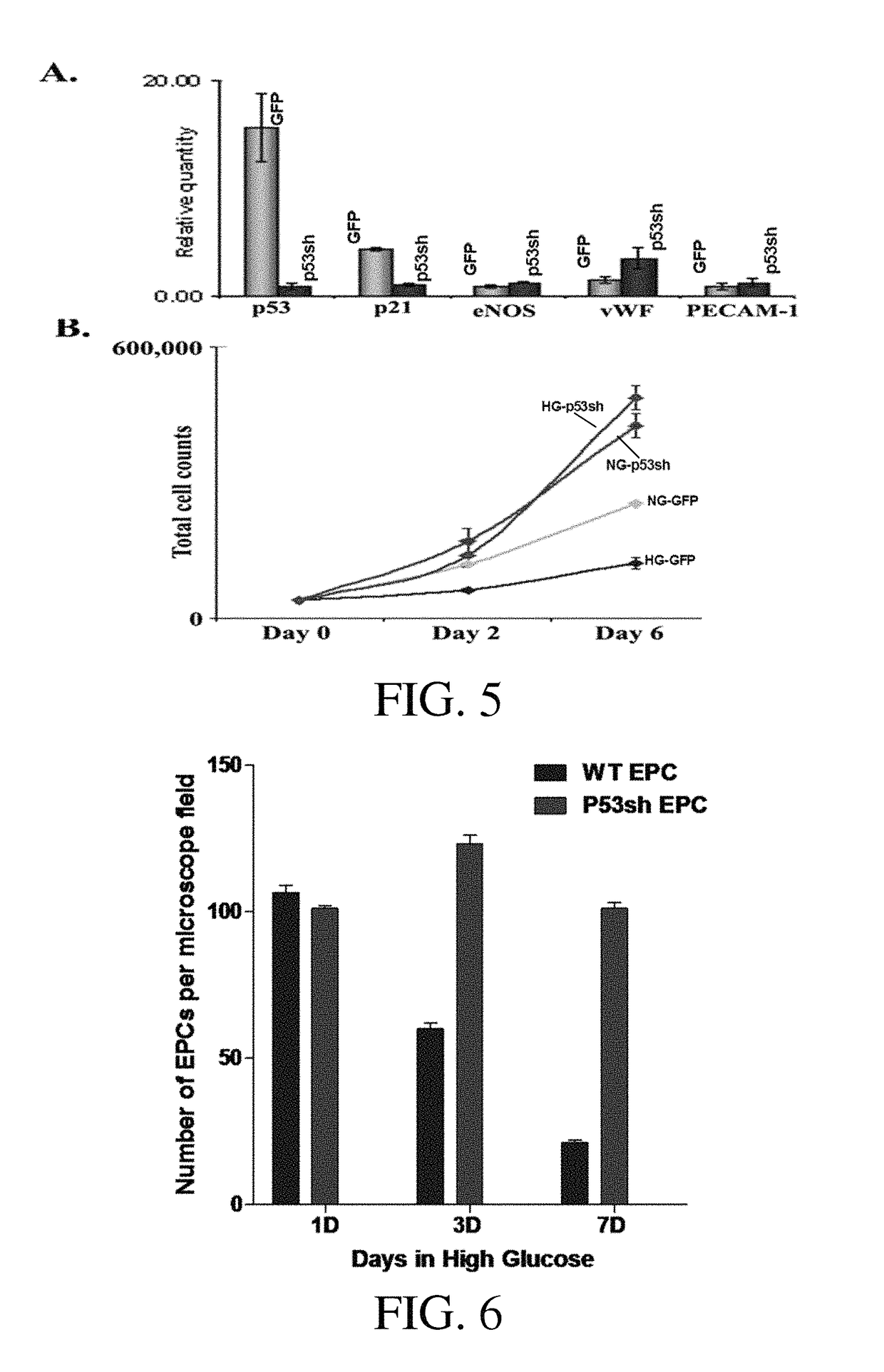P53 silenced endothelial progenitor cells for diabetes
a technology of endothelial progenitor cells and p53, which is applied in the field of genetically modified endothelial progenitor cells, can solve the problems of prone to serious vaso-occlusive complications, and achieve the effect of reducing the effects of peripheral vascular disease and peripheral vascular diseas
- Summary
- Abstract
- Description
- Claims
- Application Information
AI Technical Summary
Benefits of technology
Problems solved by technology
Method used
Image
Examples
examples
[0030]The invention aims to prevent p53 mediated EPC death in the presence of hygerglycemia until mature endothelium or capillaries are formed. Mature endothelial cells are much less susceptible to hyperglycemic cell death compared to human EPCs. Our preliminary results demonstrate poor survival of human EPCs and also CD34+ cells in high glucose. This is a direct consequence of elevated glucose levels and not secondary to osmolality effect. Apoptotic death of EPCs in hyperglycemia is accompanied by up-regulation of p53 in-vitro. Therefore, transient knock-down of p53 in transplanted CD34+ cells can improve their survival and can be a viable therapeutic intervention in PVD in both type 1 and 2 diabetes patients. This technique will also help to reduce the number of stem cells necessary for transplantation for new vessel formation in an apoptotic environment.
[0031]This study looks at the feasibility of using apoptosis resistant human CD34+ cells in diabetic mouse models. The concept o...
PUM
| Property | Measurement | Unit |
|---|---|---|
| time | aaaaa | aaaaa |
| time | aaaaa | aaaaa |
| time | aaaaa | aaaaa |
Abstract
Description
Claims
Application Information
 Login to View More
Login to View More - R&D
- Intellectual Property
- Life Sciences
- Materials
- Tech Scout
- Unparalleled Data Quality
- Higher Quality Content
- 60% Fewer Hallucinations
Browse by: Latest US Patents, China's latest patents, Technical Efficacy Thesaurus, Application Domain, Technology Topic, Popular Technical Reports.
© 2025 PatSnap. All rights reserved.Legal|Privacy policy|Modern Slavery Act Transparency Statement|Sitemap|About US| Contact US: help@patsnap.com



